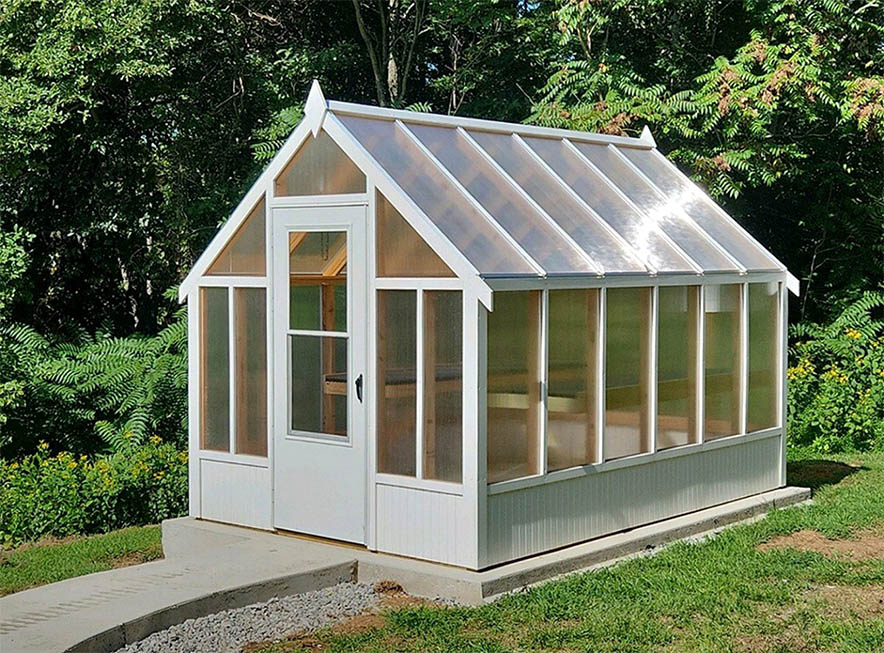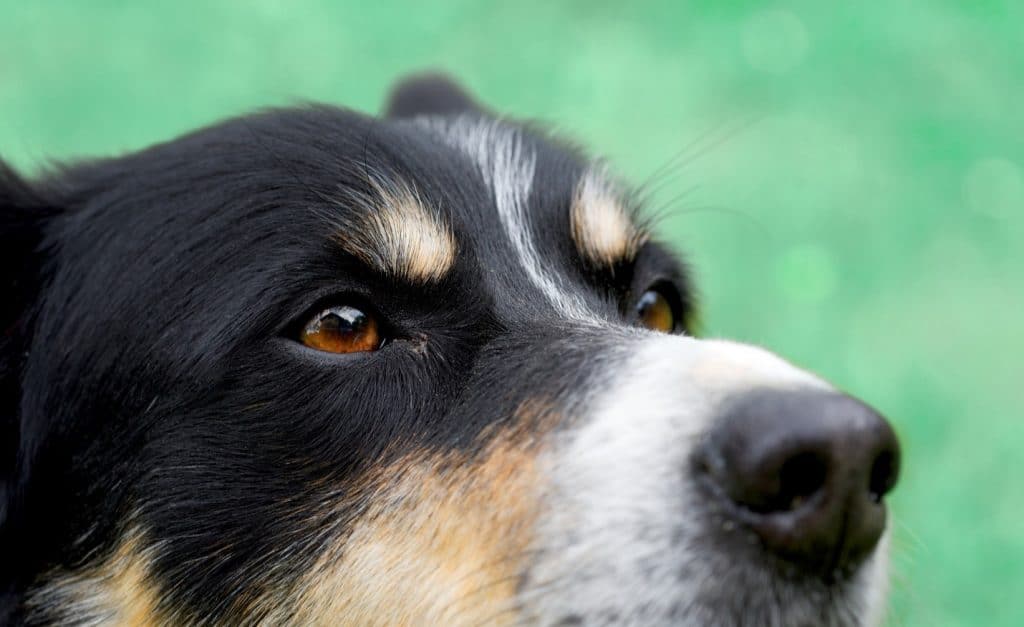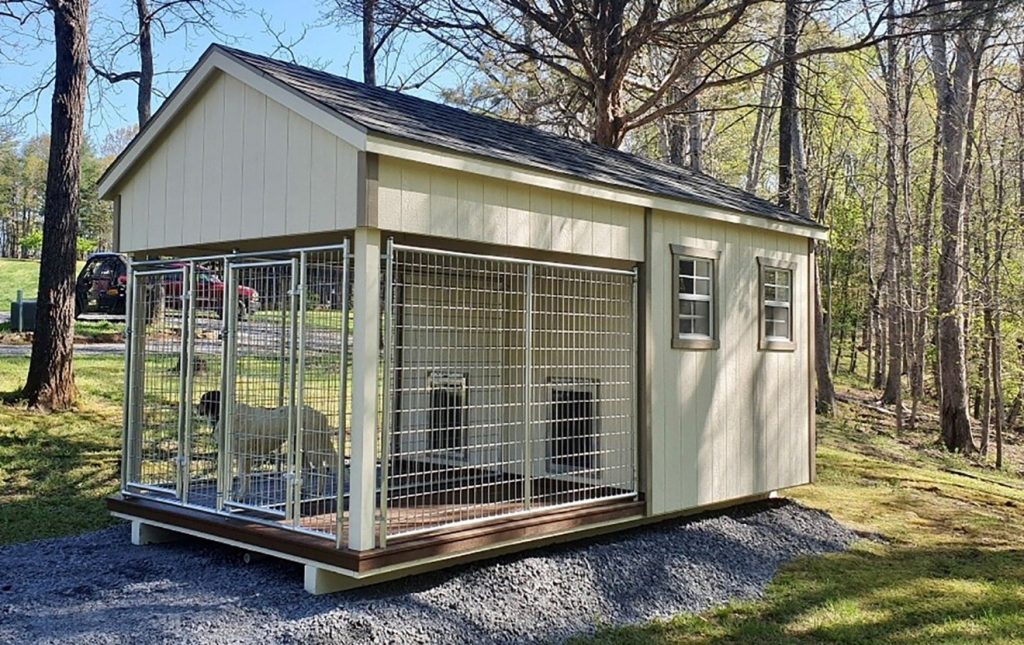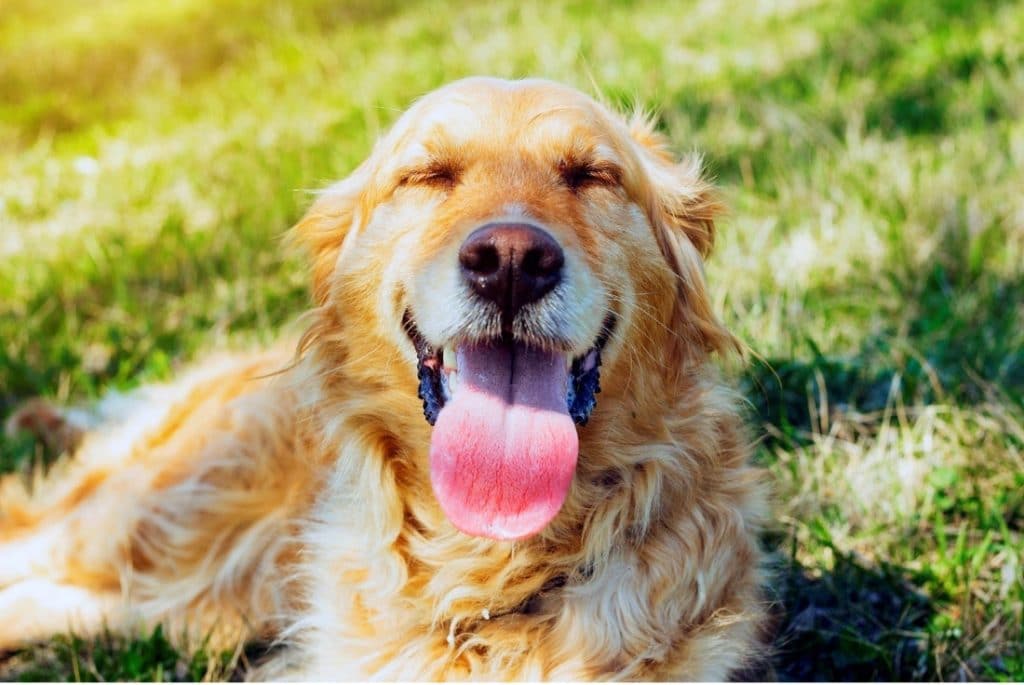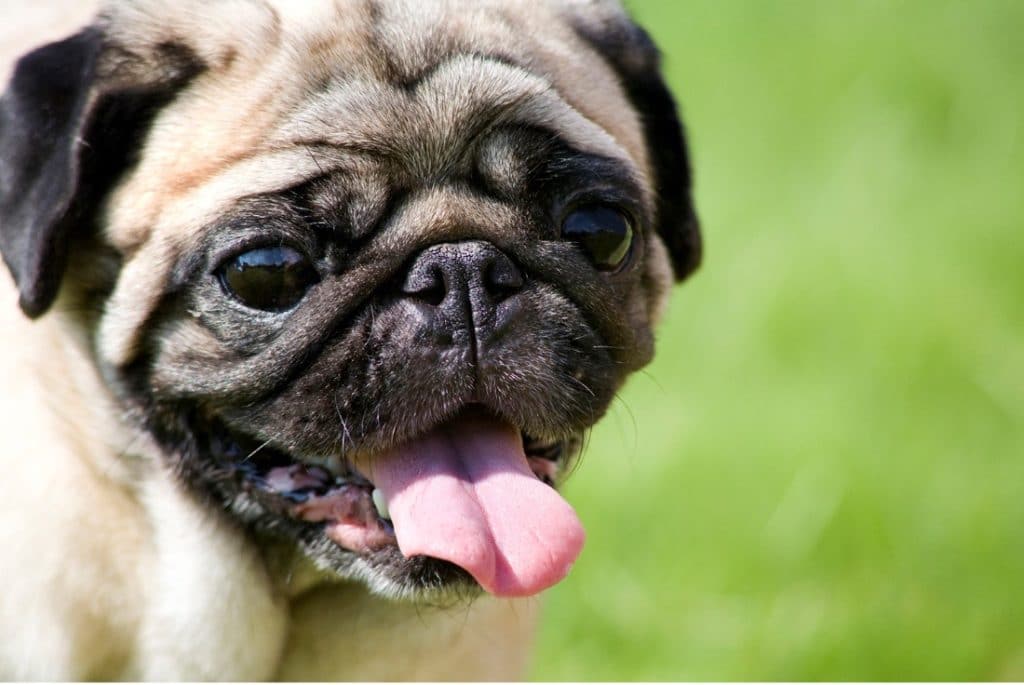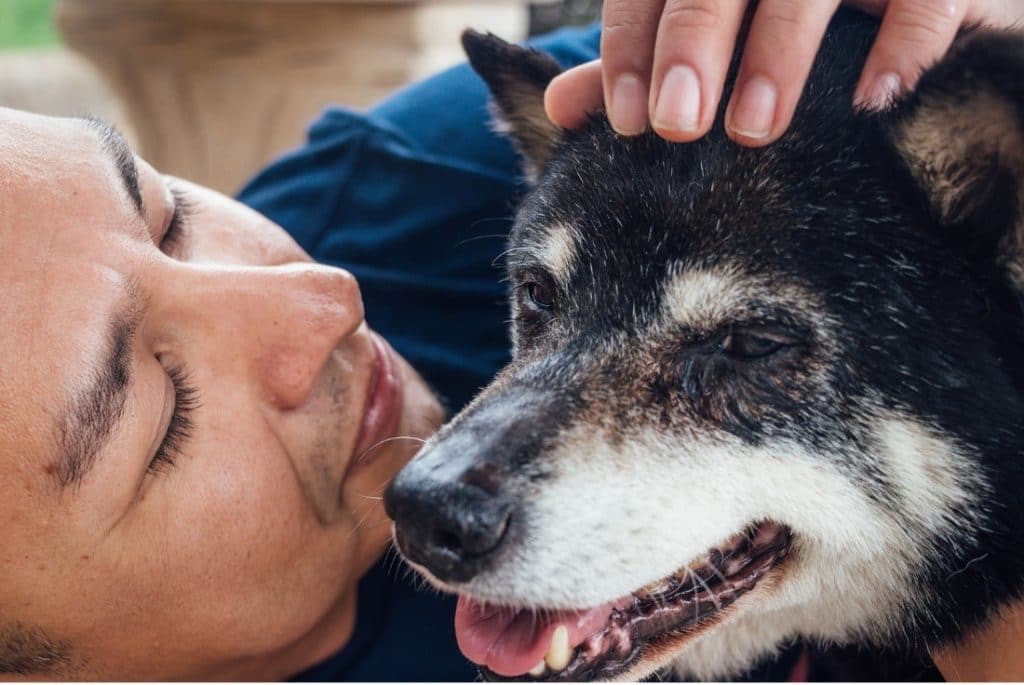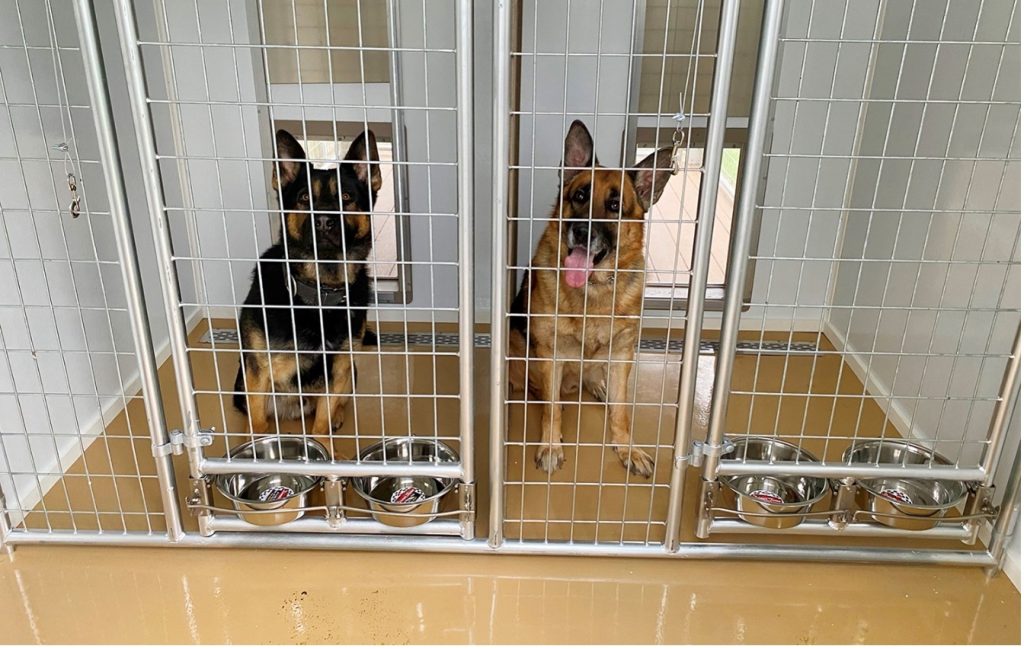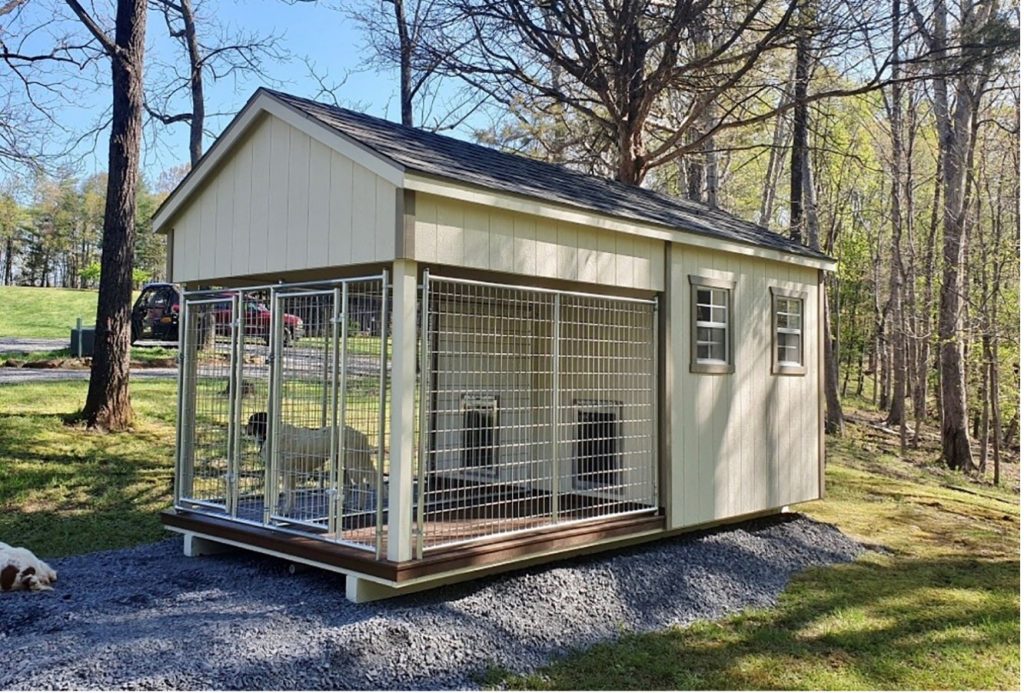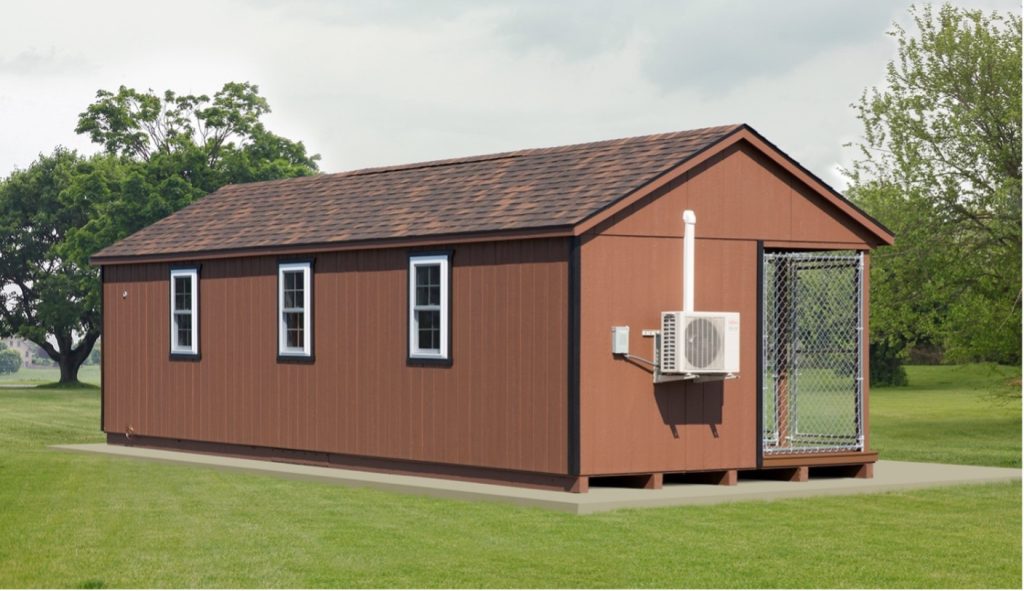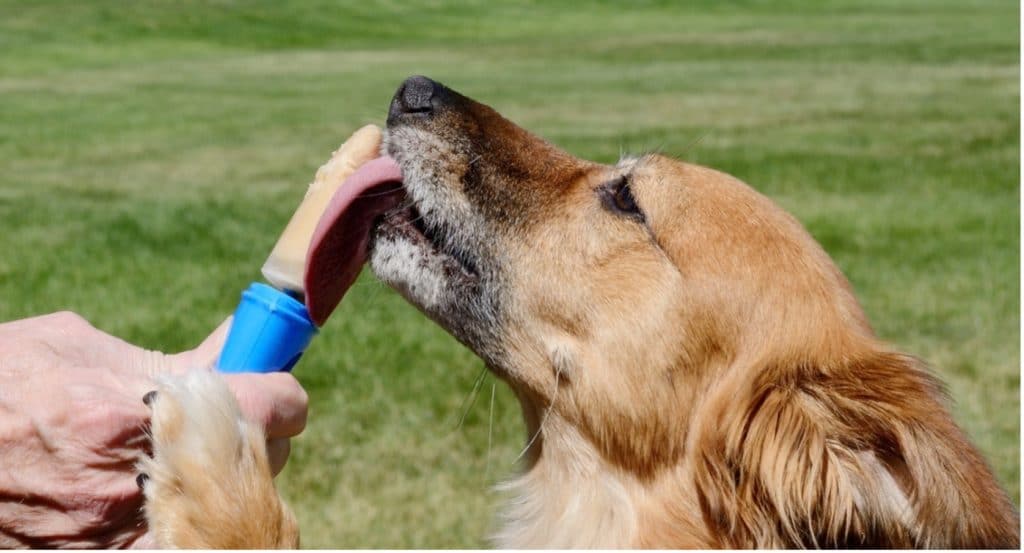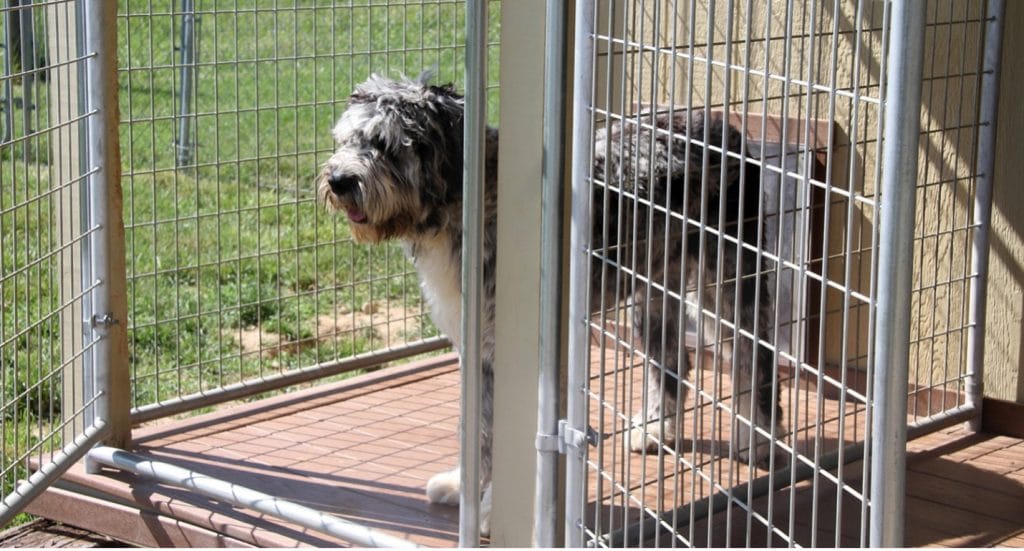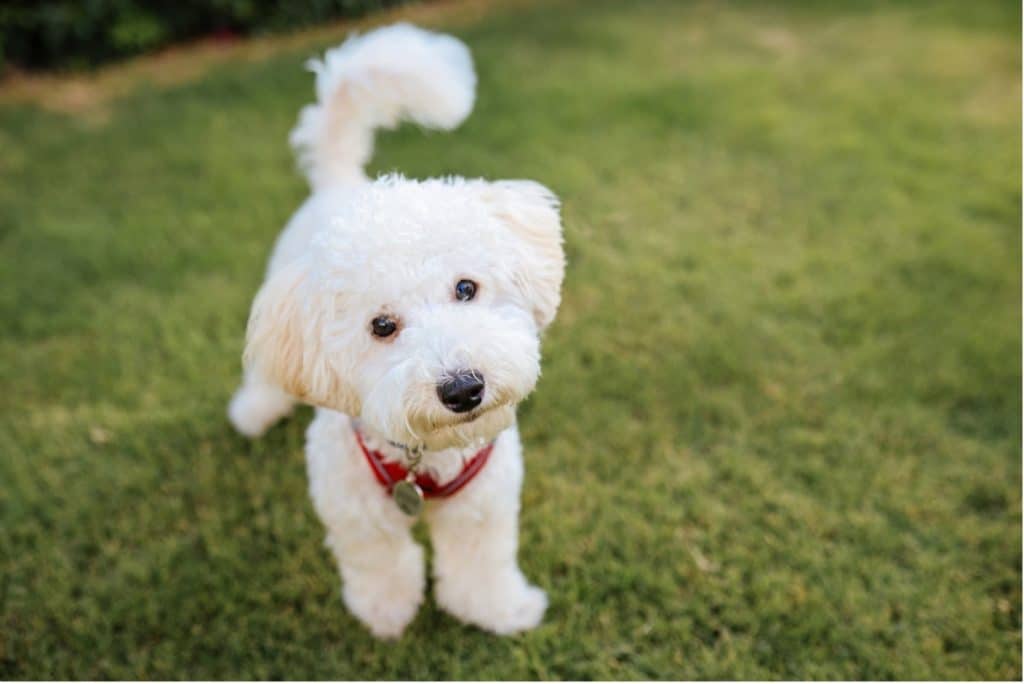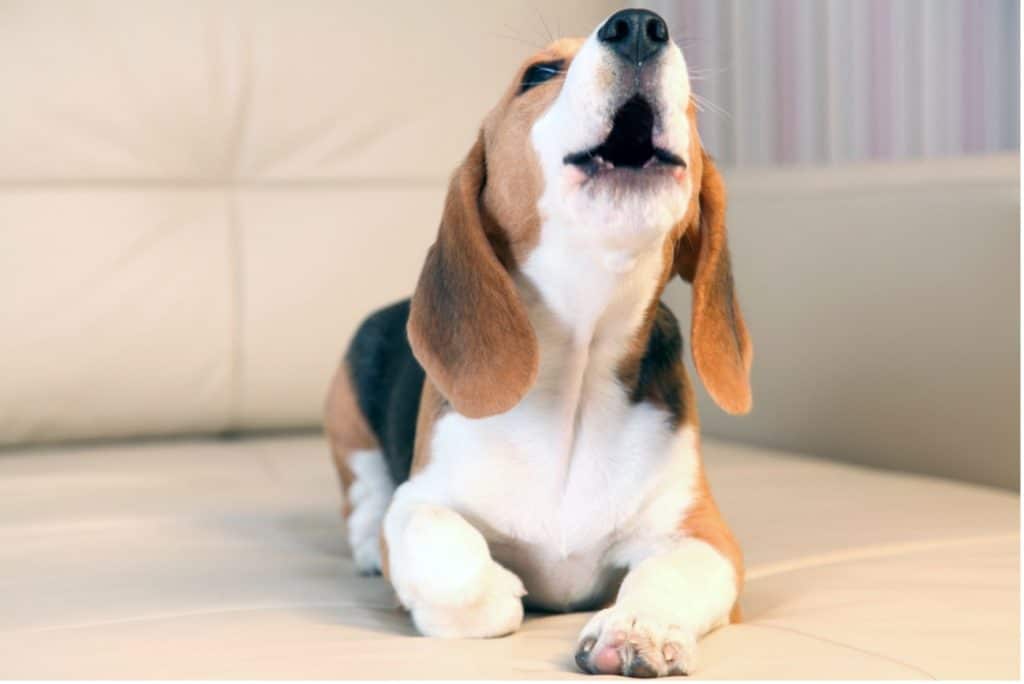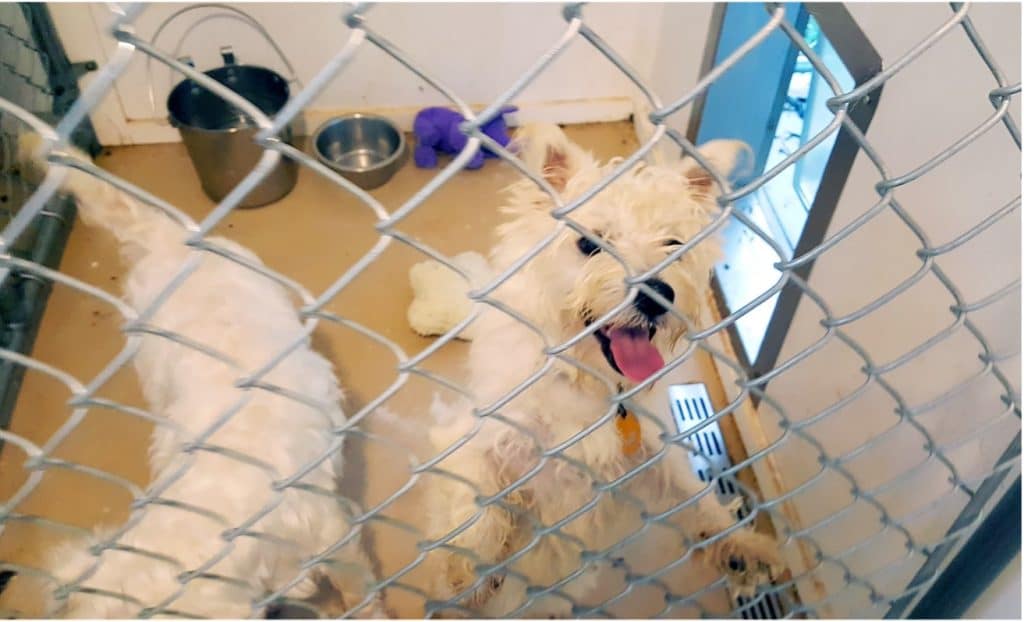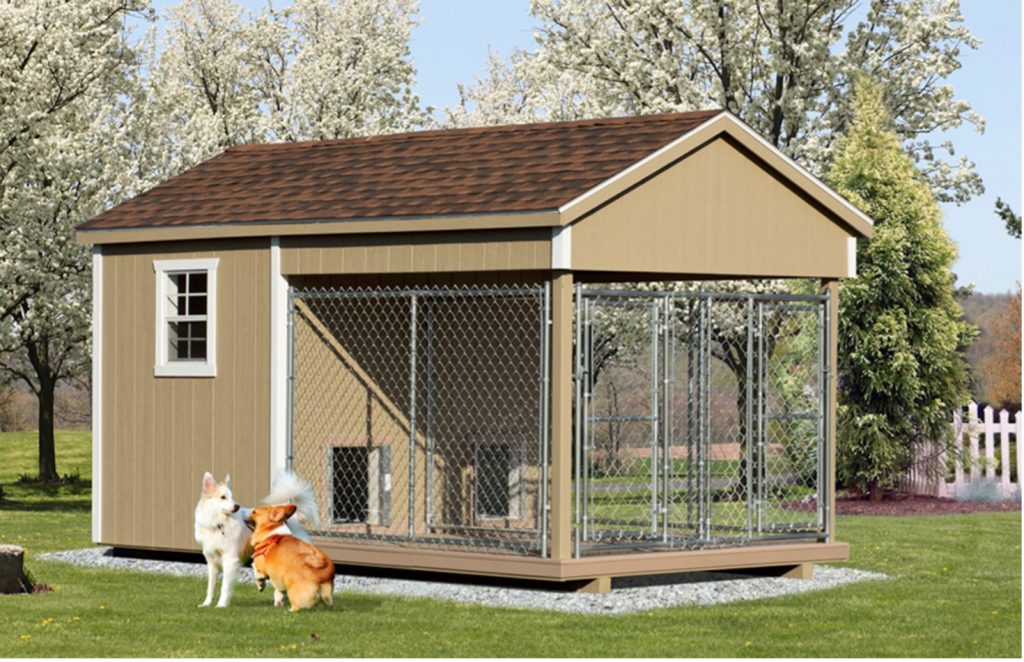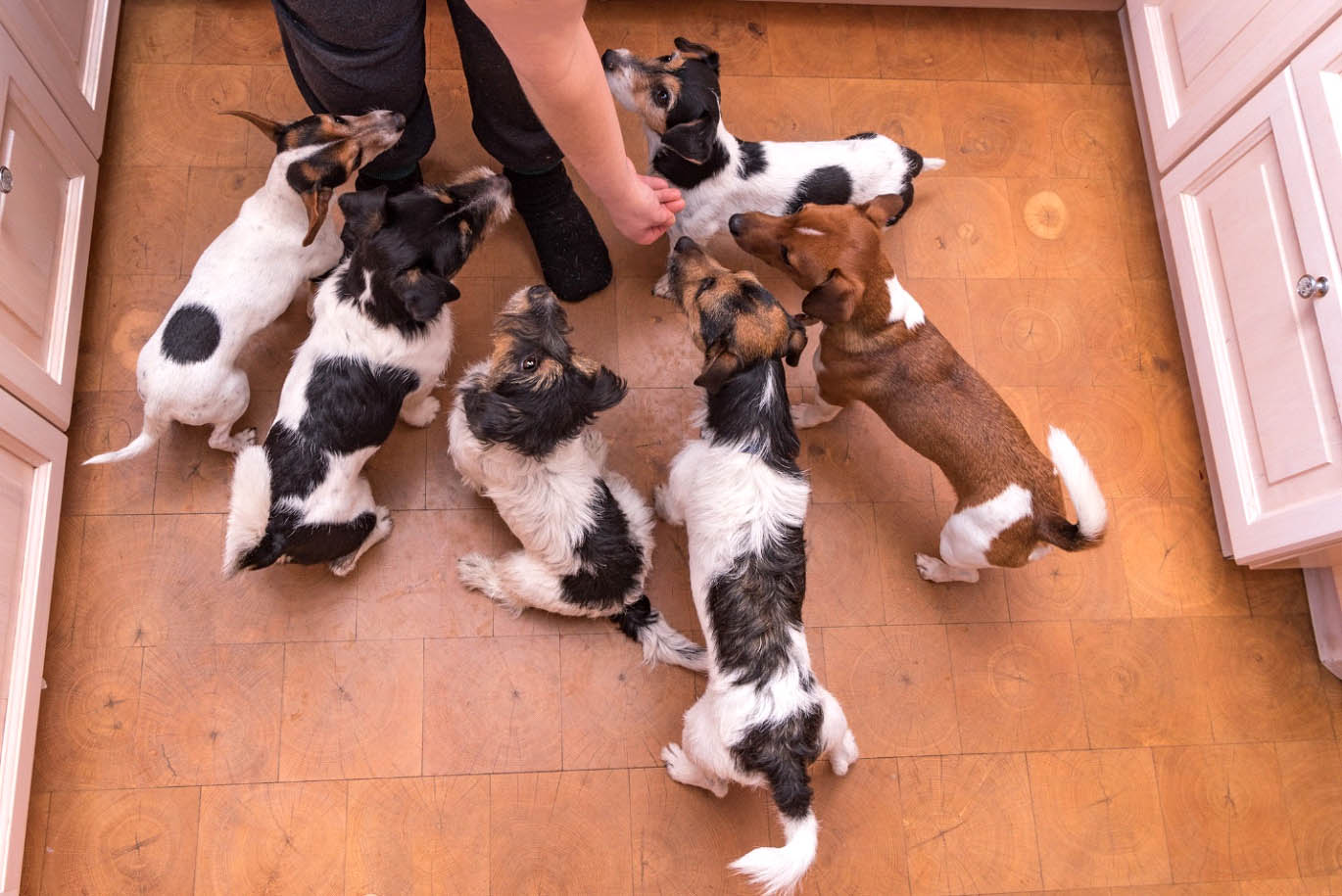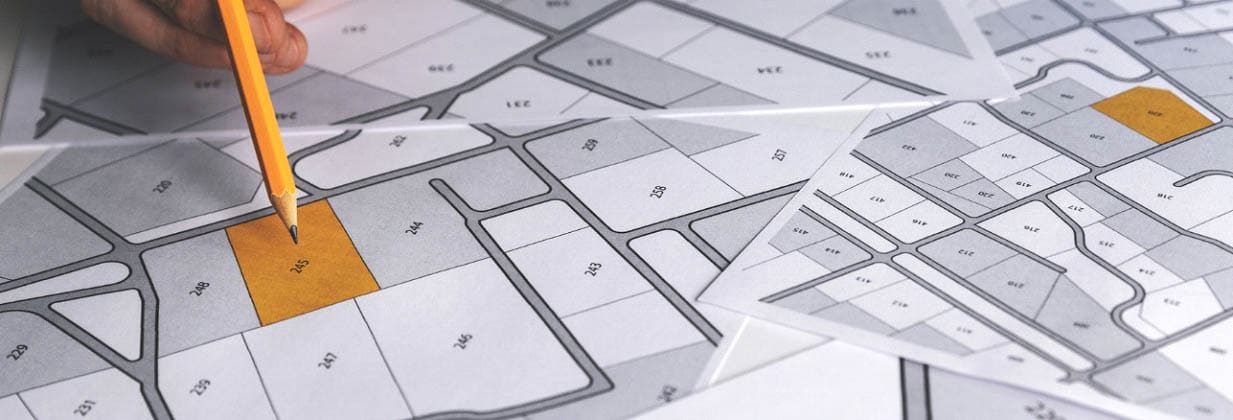Greenhouses are a superb way to extend your growing season, protect your plants from pests and harsh weather conditions, and enjoy fresh produce all year round.
Continue readingShould You Put Chickens in Your Greenhouse?
A greenhouse is a great winter home for chickens, especially if you live in a very cold climate, where keeping a coop warm enough can be a challenge, and forage is often covered in snow.
Continue readingHow to Use a Kennel to Train a New Puppy
Too often, people think about a kennel as somewhere to put a dog when you don’t have time for them. However, an outdoor kennel can be an invaluable training aid for a new puppy.
When used properly, a kennel can help you train your puppy so that they’ll get to spend more time in the house with you without destroying your things or making you crazy. Here are some tips on how to use an outside crate/kennel to train your new puppy:
What Do We Mean By “Kennel”?
When we talk about training your puppy with a kennel, we’re talking about a kennel that is separate from your home and has an indoor and outdoor portion. We don’t mean a wire or plastic crate.
The indoor and outdoor portions of the kennel should be separated by a dog door. The outer portion should be covered and protected from bad weather. The inside portion should be small enough that a puppy will see it as a bed.
It should be just big enough to turn around in and stretch out when lying down, but no bigger. If you’re buying a kennel for the size your dog will be as an adult, you may need to block off part of the interior portion to make it small enough to be useful for potty training a puppy.
Train Your Puppy to Chew on Appropriate Things
For most people, one of the most challenging aspects of training a puppy is preventing them from chewing on everything in the house. Puppies explore the world with their mouths, so it’s perfectly natural for a puppy to put their teeth on everything. As puppies teethe, all sorts of unexpected things can be soothing to their sore gums.
If puppies are allowed to chew on inappropriate objects, it is much more difficult to teach them to chew on the right things. Therefore, training a puppy what’s OK and what not OK to chew requires constant supervision. However, you probably need to work, eat, and take a shower, which can leave your puppy with the opportunity to chew on something they shouldn’t.
A kennel can be the perfect solution. Your puppy can hang out in their kennel with an assortment of appropriate chew toys and nothing for them to chew on that they shouldn’t. Using a kennel in this way has the double advantage of keeping your puppy from chewing on anything inappropriate and teaching them to enjoy chewing on toys.
Later, when your puppy sees the same toys in your house, they’ll recognize them as desirable things to chew on. This makes it less likely that your puppy will chew on something else in the house instead of their toys.
Eliminate Biting and Overly Rambunctious Play
Just as puppies put their teeth on all sorts of things in your home, they’re also very likely to put their teeth on you. It’s perfectly natural for puppies to bite. It doesn’t mean that your puppy is aggressive or that they don’t love you.
Puppies bite one another and adult dogs in their pack. Play biting teaches puppies bite inhibition and makes a serious bite in the future less likely.
However, people have thin skin compared to dogs, and the same bites that are playful in a litter of puppies can be painful to you. When puppies get very energetic and keep biting even if they’ve been reprimanded, it can be very difficult for them to have the self-control to stop.
Techniques like physical punishment, yelping or yelling, or even biting the dog back are more likely to escalate the behavior or break the bond between you and your dog. Putting your puppy in their kennel when they can’t control their nipping is a great way to give them a chance to calm down and develop the self-control to listen the next time you tell them not to bite.
Being separated from you when your puppy is in the mood to play is an innate punishment, but it’s not the kind of punishment that will break the bond between you and your puppy. It is, however, a punishment that will make it less likely that your puppy will keep biting the next time you tell them to stop.
Potty Training
Ideally, when you’re potty training a puppy, you’ll let them out at least every 2 hours that they’re awake and after meals or periods of playing. You need to watch a puppy very closely for signs that they are about to have an accident inside so that you can get them outside to an appropriate place. Every time your puppy goes to the bathroom inside without you noticing it reinforces that it’s okay for them to do so, which will cause potty training to backslide.
You may not be able to let your puppy out this often or watch them this closely. Paper training can be a great alternative that allows your puppy to learn to eliminate in the appropriate place themselves, without you having to take them outside.
There are some issues with traditional paper training, however. For one thing, it tends to be messy. Puppies love to play with paper or newspaper at the bottom of their pen, which can make laying down the paper and keeping it down a challenge.
Furthermore, once puppies associate paper with going potty, they may try to go on any magazine they find around the house. Some puppies even associate rugs with paper and will tend to go on rugs, which of course is not what you want.
Using artificial turf in a kennel is a great alternative. You can use artificial turf in the same way you would use paper in traditional paper training. Lay artificial turf over the entire outer part of the kennel.
Your puppy will naturally leave the inside portion with their bedding to go on the outer portion on the artificial turf. Gradually reduce the amount of AstroTurf until it’s only in a corner of the outer part of the kennel.
When your puppy gets old enough to hold it until you can let them out, they’ll naturally associate artificial turf with grass and wait to go outside on the grass. This can be a great way to potty train a puppy if you don’t have time to take them out every couple of hours.
Prevent Separation Anxiety
Perhaps you’re able to be home all of the time with your puppy and you may wonder why you would even need a kennel. However, there can be some negative consequences of spending too much time with your puppy as they’re growing up.
Puppies who are allowed to spend all of their time with their families are more likely to develop separation anxiety. To prevent separation anxiety, it’s best to give puppies scheduled time away from you.
While putting your puppy into a crate or another room can be helpful, your puppy may still be able to smell and hear you in the house. If later in life you leave them entirely alone and they can’t smell or hear you, separation anxiety could be triggered.
An outside kennel can be the perfect way to prevent your puppy from developing this kind of separation anxiety. Your puppy will learn that when they are in their outside kennel they can play with their toys by themselves and that you will return soon.
By doing this from the time your puppy is very young, you can teach them that being away from you is a great time to play with a particularly desirable toy like a stuffed kong and that it isn’t a cause for concern.
Teach Self-Control
Another tip on how to crate/kennel train your puppy is to teach self-control, a skill that your dog develops, not a behavior that they are trained. Dogs with good self-control are much more pleasant companions. When used properly, a kennel can be a good way to teach your dog self-control.
By putting your puppy in their kennel with a great chew toy that they don’t always get, you can teach your puppy to focus on their toy instead of something else going on in the yard. You can try putting your puppy in the kennel and then doing some gardening.
Your puppy will learn that they can’t always get to you, but that they can find ways to occupy themselves. In time, your puppy will stop performing frantic behavior to try to get to you and instead quietly occupy themselves.
Later in life, this skill translates to a dog that can look away from something tempting when on a leash or in the yard instead of giving in to the impulse to behave erratically.
Use a Kennel Appropriately to Train Your Puppy
A kennel can be a superb training aid to make your life with your puppy a lot easier and more enjoyable. The trick is to use the kennel deliberately and consciously as a training aid, rather than just using it as somewhere to put your puppy when they’re driving you crazy. By utilizing these tips, you’ll likely find that your puppy learns to be a more pleasant and happier companion.
Tips for Kennels and Caring for a Reactive Dog
Caring for a reactive dog can be very challenging. Some reactive dogs are all bark and no bite. Others may really be aggressive and seek to cause damage. Sometimes you’re not sure whether a dog that is behaving aggressively really would cause any harm or not.
Regardless, special care is needed to keep these dogs safe and to protect others from them. Kenneling can be a great solution for reactive dogs, but it’s essential that it’s done appropriately.
Here are some tips to help you kennel your reactive dog safely and keep them happy.
Why Might You Want to Kennel a Reactive Dog?
Reactive dogs are often frustrated dogs. In this case, it may seem that kenneling will only worsen rather than improve the situation.
However, when done properly, kenneling can be a valuable tool for improving a reactive dog’s reactivity and keeping them safe. Here are some times when kenneling is essential to caring for the reactive dog:
- Protect service people or guests. Your reactive dog may do just fine with your family, but they may be very reactive to strangers. Kenneling is a way to safely get your dog out of the house and protect them from the stress of being around strangers and protect your guests from a potentially aggressive dog.
- Crate and rotate. Sometimes, two dogs that previously got along very well suddenly become intensely aggressive with one another. When families are unwilling to part with either dog, crate and rotate may be the solution. A kennel is a perfect way to keep both dogs safe and comfortable during alone time and alternate giving them time with the family.
- For training. Sometimes, a reactive dog can’t be trusted with the family until they have been trained. This may be true of severely resource guarding dogs or dogs with unpredictable aggression. A dog kennel for reactive dogs is a safe place for them to relax and have their food or toys where you won’t have to worry about stumbling into their space and causing an aggressive episode.
Place the Kennel in a Private Location if Your Dog is Reactive to People
A reactive dog’s behavior may worsen if they are constantly exposed to stimuli that cause a reactive response. If your reactive dog’s kennel is near a path or driveway, close to a road, or somewhere that they are constantly exposed to gardeners, service people, etc, they may constantly be triggered and feel the need to respond.
The person who is triggering the aggression will typically go away after being barked at, either because they are frightened away by your dog or because they simply go away in the course of their own business.
This reinforces to your dog that barking and behaving aggressively caused the person to leave, which makes it much more likely that they will bark and behave aggressively again. Furthermore, being unable to reach the target of their reactivity can be very frustrating for dogs, which can cause the behavior to intensify over time.
Kenneling your reactive dog somewhere that they will frequently be triggered by people nearby can cause reactivity to get worse or cause reactivity to turn into real aggression. Try positioning the dog kennel for reactive dogs behind a privacy hedge, in the back of your property where people are unlikely to go, or use landscape fabric or another type of privacy shield to keep your dog from seeing people near the kennel.
Keep Dog Reactive Dogs from Seeing One Another
Place reactive dog’s kennels back to back instead of side by side. If a dog reactive dog is kenneled in such a way that they can see the other dog in its kennel all the time, it will constantly be triggered and frustrated, causing a lot of stress and elevating aggression.
It is sometimes thought that by allowing dogs to see each other, the aggression will be reduced over time, but this is very rarely the case. In fact, when people want dogs to be aggressive to each other, such as in the case of illegal dog-fighting, dogs are typically chained up just out of reach of one another. Over time, the frustration of not being able to get to the other dog escalates aggression.
Even dogs that are not initially aggressive towards other dogs may become so if kept just out of reach of one another.
If you have two kennels, you can place them back to back so that you can conveniently tend to both dogs without them being able to see each other or sharing a fence.
If you have a dog that is reactive to another dog on your property, you may “crate and rotate” so as to give both dogs time out of their kennel to run and play safely. A kennel can be a great tool for such a lifestyle since it gives dogs plenty of room to stretch out and be comfortable when they’re contained.
However, it’s essential that the dog who is loose isn’t allowed to antagonize the dog who is in the kennel. Dogs can cause an astounding amount of damage to one another through a fence, so don’t count on the fence keeping your dogs separated if they would like to fight.
Furthermore, allowing one dog to approach a kenneled dog will be very frustrating for the dog in the kennel, which can make aggression worse. The best solution for this situation may be to keep the dog who is in their kennel in the interior portion, where the loose dog can’t approach.
This is the perfect time to give your dog a chew toy or a stuffed food distributing toy to occupy them in the interior portion of the kennel until the other dog is put up or in the house.
Try a White Noise Machine or Music
Dogs have extremely good hearing. You may find that your reactive dog is triggered by even the slightest sounds from the road, a neighbor’s property, etc. If your dog is heavily triggered by the sounds of people or other dogs nearby, it can be helpful for some dogs to have white noise playing in their kennels.
A white noise machine isn’t expensive, but it can make a big difference in reducing reactivity in your sound-reactive dog. It is certainly still possible that your dog will hear sounds they react to over the sound of the white noise, but for many dogs, it can be surprising how big of a difference using white noise can make.
Some dogs seem to be soothed by music, so this is also an option to experiment with to see if it will reduce the level of reactivity.
Design the Kennel to Avoid Contact with Dogs that are Reactive to People
If you have somebody who takes care of your dog who your dog is reactive to, it is essential that the kennel can be thoroughly cleaned and food and water supplied while avoiding contact with the dog.
Perhaps you have a dog that resource guards or is unpredictably aggressive that you are working with. Maybe you can interact just fine with a dog but someone else in your family triggers aggression.
Whatever the case may be, it is important to be able to provide care without contact if necessary. Choose a kennel with a guillotine-style door so that the dog can be locked in the inside or outside portion so that the other part of the kennel can be cleaned safely.
Food and water dishes that can be accessed from the outside and slipped into a designated door enable you to care for your dog without risking a bite as you set a food or water bowl in the kennel.
Double Doors for Dogs That Need to be Contained on Leash or Have Barrier Aggression
Often, a reactive dog needs to be handled in a particular way. Perhaps a muzzle needs to be put on before you go on a walk or you need to attach both a collar and a harness to be absolutely certain that your dog won’t escape from your control and hurt somebody on a walk.
In such cases, it’s a good idea to choose a kennel that has a two-door setup so that you don’t have to worry about your dog pushing past you and getting out of your control. You can go into the kennel space, close the outside door, and then let your dog out of their kennel.
This way, you can safely get your dog geared up for their walk without worrying that they will shove past you and cause a problem.
This is also a great solution for dogs that have barrier aggression. These dogs may behave aggressively if you try to approach them directly in their kennel, but may be fine if allowed into a neutral space with you.
Eliminating the moment when the door must be opened and the dog handled allows the dog to come out of the kennel in their own time, interact freely with you in the neutral space, and be calm and easy to handle when you are ready to put on their leash or other equipment.
Choose a Very Secure Kennel
It may go without saying that it’s extremely important that your kennel doesn’t fail when you have a reactive dog. The last thing that you want is a dog that is out of control to break through the fencing, cause a door to open, or otherwise get loose.
The kennel you choose should have secure locking mechanisms on the doors that your dog won’t be able to figure out how to open. Flooring should be chew resistant so your dog won’t be able to chew or dig a hole out.
Fencing should go all the way up to the roof of the kennel to prevent a dog from climbing or jumping out. Chain link is fine for many dogs, but for very powerful or persistent chewers, it may be better to choose welded wire to make absolutely certain that your dog won’t be able to break loose.
Use a Kennel to Your Advantage for Your Reactive Dog
A kennel can be an amazing way to train a reactive dog and keep them safe and happy. However, careful planning and management is essential to kennel the reactive dog safely and effectively. By keeping these tips in mind, you’ll set yourself and your reactive dog up for success.
Warm Weather Tips for Your Kennel
It’s natural to think about protecting kenneled dogs when temperatures are very cold and snow is on the ground, but it can be harder to realize how important it is to keep dogs comfortable in hot weather. However, hot weather can be extremely dangerous for dogs so it is important to know how to keep dog kennels cool in summer.
Not only can dogs be uncomfortable in excessively warm temperatures, but they can also suffer from heatstroke, which can be deadly. It’s very important to make sure that you’re taking the necessary steps to protect your dog in warm weather.
When is Warm Weather Climate Control Most Important?
All dogs need temperature control. Any dog can overheat in excessively hot weather. However, there are some cases in which it is even more important for you to be sure that kennels are sufficiently cool:
Brachycephalic Dogs
Brachycephalic dogs have short muzzles that can make it more difficult for them to pant and effectively cool themselves off. They have a narrower trachea, which could make it difficult for them to breathe, especially when they are trying to pant to cool off.
Examples of brachycephalic breeds include Bulldogs, Boxers, Boston Terriers, and Shih Tzus. Mixed breed dogs can also inherit the shortened snout from one or both parents. If you have brachycephalic dogs, it is essential to be aware of the ease with which they can overheat and prevent them from having to struggle with very warm temperatures.
Pregnant and Nursing Mothers and Puppies
Dogs who are pregnant or nursing and young puppies can all be more susceptible to hot weather. Pregnant dogs may be less able to regulate their own body temperature and tend to feel hotter.
Nursing mothers are constantly losing hydration through milk, which can make it harder for them to make up for the water they lose while panting by drinking water. Very young puppies have difficulty managing their own temperature and may not know to get out of sunshine. Mothers and puppies should be protected from the heat and should probably not be kept in a kennel with an open run in hot weather.
Older Dogs
As dogs get older, they may not be able to regulate their body temperature as well. Dogs can suffer from a form of dementia that is not unlike human dementia.
Older dogs that are suffering from this condition may stay in the sunshine even as they overheat. If you have older dogs kenneled, it’s important to observe their behavior and ensure that they are making good decisions about cooling themselves off.
Warm Weather Tips for Your Kennel
Always Make Sure There’s Plenty of Water
Most dogs can do a pretty good job of keeping themselves from overheating assuming the conditions aren’t too hot and they have plenty of water. However, a knocked-over water bowl can become a serious situation very quickly.
An automatic water bowl can be a good way to make sure that there’s always a supply of fresh water. However, you’ll still need to regularly check to make sure nothing has gone wrong and to clean the basin.
Whether you have an automatic water bowl or not, you need a bowl that is held firmly in place with a welded metal frame and a metal spring. You don’t want to take any chances with the bowl being tipped over on a hot day.
Provide Shade
While dogs likely enjoy a bit of sunshine in the cool winter months, in the summer they’ll want to get away from the heat of the sun. If the sun is shining directly into the outer part of the kennel, dogs may feel torn between wanting to get away from the heat into the inner part of the kennel and wanting to stay outside to catch interesting smells and see what’s going on.
You don’t want to put your dog in the position of having to decide whether they want to be cool and bored or hot and engaged. Make sure that there is sufficient shade in the outer part of the kennel throughout the day.
Enable Air Circulation
If you choose not to have an air conditioner in your kennel, you will want to make sure that there is plenty of air circulation in the inner part of the kennel. Windows in the inner portion allow air to circulate freely throughout the building and in and out of each individual kennel.
Good air flow can carry away body heat and ensure that continuous fresh air is being brought to dogs. Fans are also very helpful in encouraging good air circulation.
Install Air Conditioners or Fans
In very hot climates, an air conditioner can make all the difference in the world by providing sufficient cool temperatures to your kennels. In more temperate climates, fans may be sufficient.
Where your kennel is located is also an important element in deciding whether you need an air conditioner or whether fans are good enough. A kennel housed under tree cover in a cool area of the yard may not get nearly as hot as a kennel in direct sunlight, even in the same climate.
As a rule of thumb, if you are cool enough with just a fan, your dog likely will be as well. However, if you are uncomfortably hot and sweating with a fan, your dog would probably appreciate an air conditioner.
At Horizon Structures, we are happy to install air conditioners directly into the kennel. You can choose between a 5000 and 10000 BTU air conditioning unit.
If you choose to have air conditioning in your dog kennel, be sure that you choose well-insulated dog doors so that the cold air doesn’t shoot out into the kennel. Dogs can easily be trained to use their dog door by tossing a few treats and showing dogs how to push the door open and closed as they need.
Fans can be installed overhead or mounted on walls. Just be certain that wherever the fan is mounted, dogs won’t be able to chew on it or end up sticking a tail or paw through the grate into an active fan.
Consider an Optional Water Feature
Some dogs love to cool off by getting wet. There are a number of things you can do to provide them with the opportunity for water fun. You can purchase a doggie fountain that your dog can step on to send a stream of water into the air. This can be a great way to cool off and also a secondary source of drinking water. Another option is to put a small pool into the outside portion of the kennel so that dogs can lie in it if they like.
A water feature is another thing that you will need to maintain, so it may not be a good option for the entire summer, but it can be a fun source of enrichment as well as a way to cool off on the hottest days. If you provide a water feature, make sure to put it in a shaded portion of the kennel so that it stays cool.
Commercial
Residential
Make Dog Popsicles
One great way to cool your dog down in the hot weather and provide some valuable enrichment during their kennel time is to make dog popsicles. These can be made of just about anything that your dog likes to eat.
Many dogs enjoy just munching on ice cubes or licking large blocks of ice. However, you can make it a lot more fun by freezing pieces of fruit like apples or strawberries into the ice. Freezing chicken broth is also a great way to give your dog a delicious treat and also some healthy protein. Greek yogurt is another good ingredient to add to dog popsicles.
Just see what your dog enjoys and experiment with different sizes and recipes for popsicles until you find what works well for you and your dog.
Take Steps to Avoid Pests
Temperature isn’t the only thing to keep in mind when it comes to warm weather. Pests also tend to become much more prevalent in the warmer months. Be sure that your dog is up-to-date on heartworm and flea prevention.
Keep grass and shrubbery that goes up to the edge of the kennel trimmed short to prevent pests from accumulating there. Make sure that only as much food as your dog needs is left in the kennel at any time, as a bowl of uneaten food can attract pests like cockroaches.
Keep Your Dog Safe and Comfortable in Their Kennel in the Hot Weather
Your dog can be very comfortable in their kennel even as temperatures skyrocket, provided you take steps to protect them from the heat. Make sure that your dog has access to cooler temperatures using either fans or air conditioner units.
Be sure that there is plenty of shade in the outside portion of the kennel and good air circulation in the inside portion. Extras like a water fountain or pool to play in and doggy popsicles can also be very helpful to make the warm weather enjoyable for your dog.
Why You May Want to Kennel Small Breed Dogs
When many people think about kenneling dogs, they tend to think about large dogs and especially working breeds. However, little dogs can also be working dogs, and there are many other reasons why you may want to kennel your small breed dog. Here are some tips for kenneling little dogs to keep them safe and happy.
Small dogs are often not as destructive in the home as larger dogs, and they are often more likely to be thought of as house pets than big dogs are. So why have a kennel for small dogs? Here are a few key reasons why kenneling small dogs may be a good idea:
Safety Outdoors
Your small breed dog may love being outside, but being outside can be a lot more dangerous for a little dog than a larger dog. Even in a securely fenced backyard, the outdoors can pose serious risks to your small breed dogs.
Even owls or hawks can pose a risk to very little dogs. It can be very easy for a coyote, raccoon, or even a large cat to get into a yard that you believed to be securely fenced and attack your little dog. Therefore, if you would like to give your small dog some time in the sunshine and the opportunity to enjoy the outdoors without constant supervision, a kennel is a very good idea.
No Need to Hold it During the Day
Small dogs may have a harder time holding their bladder than large dogs. This makes smaller dogs more difficult to potty train and can also make accidents within the house more likely. Some breeds, like Italian Greyhounds, are notorious for being very difficult to potty train.
Unfortunately, providing a doggie door and letting your little dog out of your house whenever they like during the day can put them at risk to predators or even birds of prey. With a kennel for small dogs, you can put down a patch of artificial grass or a pee pad in the outdoor portion and give your little dog the freedom to go potty whenever they’d like in complete safety.
Your little dog will have the comfort of the inside space and plenty of room outside to go potty when they like, and you won’t have to worry about cleaning up potty accidents when you get home.
Noise Control
Just because a dog is small doesn’t mean they make little noise. Small breed hunting dogs like Beagles and Terriers can be some of the loudest dogs around. Kenneling your small breed dogs is a great way to provide them with comfortable housing and let them be their natural loud selves without making you crazy indoors.
Breeding or Working
Just as with large breed dogs, housing a lot of small dogs safely and comfortably within your home can quickly become unreasonable. Kennels are a great way to give each one of your dogs comfort and space.
A kennel can also give your small dog plenty of room to run around and stretch out in a comfortable indoor space. It’s a great way to separate females in heat from male dogs, keep dogs that are blowing their coat from making a mess of your house, and generally keep track of multiple dogs in an orderly way.
What Should the Kennel be Like for Small Breed Dogs?
Keeping your small dog in a kennel isn’t quite the same as keeping a large dog in a kennel. There are some things that you need to keep in mind for your small dog to ensure their safety and comfort.
- Climate control. Small dogs may be more sensitive to changes in temperature than a larger dog would be. The interior portion of runs should always be precisely climate-controlled so that your little dog will be comfortable when they go inside.
- Solid floors. Little dogs have little paws that can easily slip through the grates in non-solid floors. Therefore, choose a material like PVC decking that is easy to clean, not absorbent, maintains a cooler temperature in summer and is warmer in winter, and doesn’t have gaps for paws to slip through.
- Protection from the elements. Your little dog may want to spend time outside, but they shouldn’t get rained on every time they need to go potty in the outside portion. Therefore, make sure that the outside portion of the kennel is covered. It’s a good idea to position your kennel in such a way that the morning and afternoon sun shines into it so that your dogs can get a little bit of sunshine as well.
- Easy to go between outside and inside portion. Big dogs may be able to push through a doggy door that has more tension than what a small breed dog can push through, so make sure that the doggie door between the inside and outside portion of the kennel has enough tension to stay closed when not in use but also lets a small dog push through it easily.
- Secure kennels. You may be amazed by how determined even a small dog can be in trying to get out of a kennel. A small dog may be able to climb fences and slip over the top of a door, squeeze underneath a gap between the fencing and the floor, or find some other creative way to escape. Be sure to look at the kennel from your dog’s perspective and look for any ways they could get out.
- Escape proof entry. Any dog can find ways to squeeze past you when you open the kennel door, but small dogs are especially good at giving you the slip. It’s a good idea to choose a kennel that enables you to open the door to the kennel while having a second space to keep them in a confined main area in case they slip past you.
Can Multiple Small Dogs be Housed in One Kennel?
The kennel that you want to buy for your small dog may be able to house several dogs comfortably. Naturally, you may wonder whether you can keep several dogs in one kennel. After all, you’ll be able to house more dogs overall and dogs can entertain one another and keep each other company if kept in the same kennel.
If you have small dogs that get along well together, you may be able to keep them together. However, there are some potential issues that can come up. Aggression can come out unexpectedly when dogs are housed together.
If dogs are unfixed, a female going into heat can cause aggression throughout the entire pack, in both male and female dogs. Sometimes dogs that are kenneled together for too long can begin to show aggression. Dogs can also get into fights over high-value objects like toys or food.
The more time dogs spend out of the kennel, the more successfully they are likely to be able to be housed together within the kennel. However, it is up to you to keep a careful eye on your small dogs and ensure that everyone is getting along well in the shared kennel. Provide separate toys, beds, and anything else that the dogs could compete over. Feeding separately is a very good idea.
Kennel Your Small Dog Successfully
Kenneling can be a great option for small dogs, providing safety, comfort, and convenience. Make sure that you keep your small dog’s needs in mind when choosing a kennel and you will likely find that you are very successful in kenneling your small dog.
Learn More About Horizon Structures Prebuilt Kennels & Get Pricing… HERE
Ways To Prevent Kennel Boredom
Ideally, a dog’s kennel will be a safe place for them to relax and enjoy some downtime. However, dogs can very easily become bored in their kennel. This is especially problematic for dogs that naturally have a high energy level and for dogs that spend very large amounts of time in their kennel.
In the best-case scenario, a dog won’t spend too much time in their kennel. However, in some circumstances, such as is the case for many shelter dogs, reducing kennel time just isn’t an option. Whether the dogs in your care spend more time in a kennel than they would prefer or they get plenty of exercise but are still having periods of boredom, here are some ideas for preventing dog boredom during kennel time.
Use Puzzle Toys for Feeding
For the vast majority of dogs, eating is one of life’s greatest pleasures and sources of entertainment. Using puzzle toys or food distributing toys is a great way to extend the entertainment of mealtime and keep dogs from getting bored in their kennels.
The right kind of toys will depend on the dog. For powerful chewers, opt for tough rubber toys that are nearly indestructible, such as Kong toys. For small dogs or dogs with more finesse, toys from the Nina Ottosson series are a great selection.
Experiment with different kinds of toys, but be careful to always watch dogs using the toys for some time before leaving them alone with them, as toys can become choking or impaction risks.
Introduce Quick Training Games
You probably think about training as something that should take place in a structured environment or at least as you have face-to-face time with the dog, not while the dog is behind the bars of the kennel. However, training dogs in the kennel is a great way to get more control of your kennel environment at the same time as you reduce boredom in dogs.
Clicker training works very well even when dogs are behind the bars of the kennel. You can reward positive behavior, such as dogs being quiet instead of barking when people or other dogs walk by.
You can also shape individual behaviors. Dogs can be trained to sit, lie down, stay, speak, and much more within the confines of their kennel. Consider keeping a pail of treats near each kennel and playing a brief training game with each dog as you walk by.
Consider Kenneling Together
For dogs that are dog friendly and particularly dogs that get along with a particular dog that they have befriended, you may want to think about kenneling dogs together instead of separately. There are certainly risks in kenneling together, the most obvious being that dogs would have disagreements or get sick of each other in the confined space and become aggressive with one another.
However, for the right dogs in the right circumstances, co-kenneling can give dogs the opportunity to play, snuggle, and socialize instead of being lonely and bored in a solitary kennel. Only consider this option if dogs have done very well in playgroups outside of the kennel and if they do not show any aggression towards one another under any circumstances.
Even very well-matched dogs should be given time away from each other periodically, both to avoid aggression developing and to keep dogs from becoming co-dependent on one another.
Use Chew Toys
Chewing is natural for dogs. The vast majority of dogs find it to be a very relaxing and soothing behavior. When not provided with appropriate chew toys, many dogs take to chewing on their kennel or themselves.
Depending on the type of dog you’re kenneling, a variety of different chew toys may be appropriate. Natural chew toys like esophagus, tendon, and bully sticks are a healthy supplement to a dog’s diet as well as being a very engaging chew.
Dogs that don’t swallow rawhide may also be provided with this affordable chew option. However, when swallowed, rawhide can be a serious impaction risk, so be very careful with offering this option. Himalayan cheese chews are a long-lasting and healthy selection that many dogs love.
Artificial chew toys are also a great option. Various types of nylabones, rubber chew toys, etc can all be highly beneficial to soothe your dog’s boredom. Many times, food distributing toys such as Kong toys also work very well when used as chew toys, so the same toy can do double duty when it’s full and when it’s empty.
Maintain a Routine
Dogs that know what is going to happen next may be less likely to become bored. A dog that knows they will be kenneled for a certain number of hours after the morning walk or outing before they get their afternoon outing are less likely to become hyperactive and bored than dogs that can’t predict when they’ll be able to get out again after they’ve been put away. As much as possible, maintain a routine for activities such as getting out of their kennel, training, and feeding.
Exercise and Stimulate as Much as Possible
Dogs can’t always get out of the kennel as much as would be ideal. However, when dogs do get out of the kennel, you want to provide them with as much exercise and enrichment as you possibly can. Instead of leaving a dog alone in the play yard to occupy themselves, play fetch, tug of war, or something else to get their energy out.
Activities like agility and obedience stimulate the body and mind, which are more likely to tire a dog out and help them to relax once they’re in the kennel again. Many people find that using treadmills to exercise multiple dogs at once is a great way to get their energy out in between periods of being kenneled. Going on walks to new places and meeting new people and dogs is also very stimulating and can help dogs to relax when they’re back in their kennel.
Keep Dogs from Experiencing Boredom in The Kennel
Kennel time is not likely to be the most exciting time in a dog’s life. It is natural that they will occasionally experience boredom. However, by introducing some of these things into a dog’s kennel time, you can do a lot to keep them entertained and reduce the boredom that they experience while they are in the kennel.
To learn more about Horizon Structures line of safe, high quality dog kennels, please visit our kennel page at horizonstructures.com or give us a call at (610) 593-7710 and speak to one of our knowledgeable kennel specialists.
Choosing The Right Kennel Flooring For Your Dogs
Flooring is one of the most important choices you will make when designing a kennel. Here are some kennel flooring options to help you choose which one is right for you.
Continue readingDesigning a Kennel for Long Term Cleanliness
You need your dog’s kennel to be safe and comfortable for them, but it is also vital that you create a space that is easy to clean and that stays clean in the long term.
Continue readingConsidering the Laws When Building a Private Kennel on Your Property
Whether you want to build a kennel for your own personal use or you intend to make a business or not-for-profit, considering the laws surrounding building a kennel is the first place to start.
Continue reading

